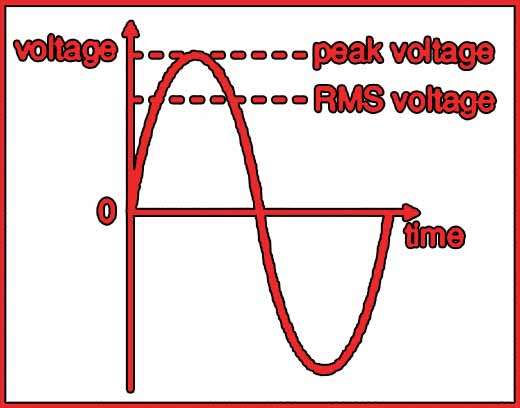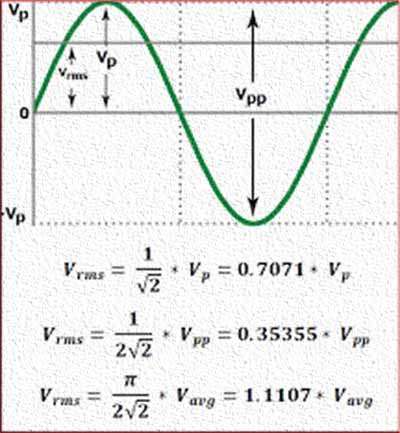Peak Value Average Value and RMS Value: Important Concepts
Table of Contents
Peak Value Average Value and RMS Value
Peak value average value and RMS value are important concepts used to analyze and describe various types of signals, such as electrical signals, sound waves, and data. Understanding these terms is crucial for engineers, scientists, and researchers working in fields such as electronics, signal processing, and power analysis.

In this article, we will delve into the definitions, calculations, and practical applications of peak value average value and RMS value.
Peak Value
The peak value of a signal refers to its maximum value over a given period. For periodic signals, it represents the highest amplitude attained during one cycle. The peak value is denoted as Vp and is significant for determining the maximum capability or voltage range of a signal. In practical terms, it helps identify the highest point or maximum intensity of a signal. Engineers use peak value to determine the maximum voltage range of a signal.

Average Value
The average value of a signal represents the mean value of the signal over a specified time interval. It provides insight into the overall behavior of the signal and is useful for comparing signals with different frequencies, amplitudes, or waveforms.
The average value is denoted as Vavg or V̅. Mathematically, it can be obtained by integrating the signal over the given time interval and dividing it by the duration of that interval. The average value is crucial for determining the central tendency or typical value of a signal.

RMS Value
The RMS (Root Mean Square) value of a signal is a measure of its effective or DC equivalent value. It is particularly important for alternating current (AC) signals. The RMS value is calculated by taking the square root of the mean of the squared instantaneous values of the signal over a given time period. Mathematically, it can be expressed as Vrms.
The RMS value represents the equivalent DC voltage or current that would produce the same heating effect as the AC signal. It is commonly used in power analysis, electrical engineering, and audio systems to quantify the effective or equivalent values of signals.
Calculations and Formulas
Peak Value (Vp)
To calculate the peak value, simply find the maximum amplitude or voltage value of the signal. Peak value average value and RMS value are important concepts in signal analysis.
Average Value (Vavg or V̅):
The average value can be computed by integrating the signal over a specific time interval and dividing it by the duration of that interval. Mathematically, it can be expressed as:
Vavg = (1/T) ∫(t1 to t2) f(t) dt
where T is the duration of the interval and f(t) represents the signal. Understanding the peak value average value and RMS value helps in designing efficient electrical circuits.
RMS Value (Vrms):
The RMS value is obtained by taking the square root of the mean of the squared signal values over a given time interval. Mathematically, it can be expressed as:
Vrms = sqrt((1/T) ∫(t1 to t2) [f(t)]^2 dt)

Practical Applications
Electrical Engineering
Peak value average value and RMS value are crucial for designing, analyzing, and troubleshooting electronic circuits, power systems, and electrical equipment. They help determine voltage limits, power capacities, and energy efficiency.
Audio Engineering
RMS values play a significant role in audio systems as they determine the power handling capabilities of speakers and amplifiers. Average values are used to assess the dynamic range and loudness of audio signals.
Signal Processing
Peak and RMS values are essential in signal processing applications such as noise reduction, filtering, and modulation. They help characterize and manipulate signals for various applications.
Power Analysis
RMS values are used to measure and quantify power consumption, load capacities, and energy efficiency in electrical systems.
Follow us on LinkedIn”Electrical Insights” to get the latest updates in Electrical Engineering. You can also Follow us LinkedIn to see our latest posts.
Frequently Asked Questions
What is the peak value?
The peak value refers to the maximum amplitude reached by a periodic waveform or signal. It represents the highest positive or negative excursion from the reference point, such as the zero-crossing point or the baseline. Understanding the peak value average value and RMS value helps in designing efficient electrical circuits.
What is the average value?
The average value, also known as the mean value, is the mathematical average of all the instantaneous values of a periodic waveform over a specific time interval. It is calculated by integrating the instantaneous values over the interval and dividing by the duration of the interval.
How is average value different from DC value?
Average value and DC (direct current) value are similar concepts but used in different contexts. The average value refers to the mean value of a periodic waveform over a specific time interval. In contrast, the DC value represents the constant voltage or current level in a DC circuit that remains constant over time. The average value is calculated by integrating the signal over a specific time interval and dividing it by the duration.
What is the RMS value?
The RMS (root mean square) value, also known as the effective value, is a measure of the magnitude of an alternating current (AC) or voltage. It represents the equivalent value of a DC signal that would produce the same power dissipation in a resistive load. The RMS value is calculated by taking the square root of the mean of the squared instantaneous values of the waveform.
How is the RMS value related to the peak value?
The RMS value and peak value are related through a mathematical relationship. For a sinusoidal waveform, the RMS value is equal to the peak value divided by the square root of 2 (approximately 0.707). This relationship holds true for pure sinusoidal waveforms only.
Can the average value be negative?
Yes, the average value can be negative. It depends on the waveform being analyzed. If the waveform has both positive and negative excursions, the average value will consider the polarity of the waveform, resulting in a positive or negative average value.
When is it appropriate to use peak value, average value, or RMS value?
The choice of which value to use depends on the specific application and the parameter of interest. The peak value is often used to determine the maximum amplitude or voltage swing of a waveform. The average value is useful for analyzing the overall trend or level of a waveform. The RMS value is commonly used to calculate power dissipation, determine heating effects in electrical systems, and evaluate the effective magnitude of an AC waveform.
